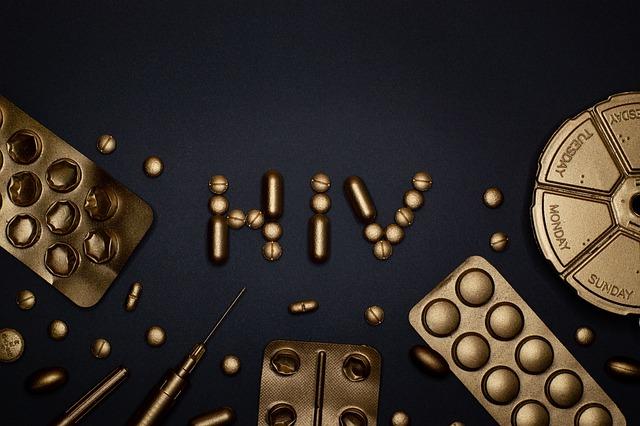Impact of US Funding Freeze on HIV Response in South Africa: insights from UNAIDS
As South Africa grapples with one of the highest HIV prevalence rates in the world, a recent funding freeze by the United States poses a significant threat to ongoing efforts in the fight against the epidemic. With approximately 7.9 million people living with HIV in the country,the need for sustained support and resources has never been more crucial. UNAIDS has sounded the alarm about the potential ramifications of this funding halt, which could undermine years of progress in treatment and prevention initiatives. The implications extend beyond healthcare, affecting social stability and economic progress in a nation still striving to recover from the socio-economic impacts of the pandemic. This article delves into the current landscape of HIV response in South Africa, exploring the consequences of US funding cuts and the urgent calls to action from health organizations and advocates working tirelessly to protect vulnerable populations.
Impact of Funding Freeze on HIV treatment Access in South Africa

the recent funding freeze imposed by the U.S. government has led to critical challenges in the fight against HIV in South Africa, a country that carries a significant burden of the epidemic. With approximately 7.5 million people living with HIV, access to treatment is paramount. The freeze threatens essential support systems, which can result in:
- reduction in Treatment Availability: Clinics may struggle to procure antiretroviral medications, jeopardizing the well-being of countless patients.
- Increased Stigma and Health Risks: Disruption in treatment can lead to viral load increases, which can contribute to the transmission of the virus, heightening public health risks.
- Strain on healthcare Workforce: With decreased funding, health providers may face increased caseloads and fewer resources, leading to burnout and reduced quality of care.
Along with the direct impact on treatment access, the funding freeze has broader implications for public health initiatives. Community outreach programs that educate at-risk populations about prevention strategies and testing resources could face cuts, leading to further increases in HIV transmission rates. An analysis of potential outcomes highlights the urgent need for sustained funding:
| Outcome | Impact |
|---|---|
| Reduction in New Infections | Potential rise in yearly new infections due to poorer access to prevention resources. |
| Treatment Adherence | Lower adherence rates as patients lose access to consistent healthcare support. |
| community Engagement | Decreased participation in awareness campaigns and HIV testing initiatives. |
Consequences for Vulnerable Populations and Communities at Risk

The freeze in US funding for HIV programs has dire repercussions for vulnerable populations in South Africa, including women, children, and marginalized communities. With limited resources, the capacity to deliver essential health services diminishes, exacerbating the challenges these groups face. Many individuals rely on these funds for access to antiretroviral therapy,education on prevention,and testing services. The implications are profound:
- Increased HIV Transmission: Reduced education and prevention programs lead to higher rates of new infections.
- Healthcare Disparities: Marginalized communities, such as LGBTQ+ individuals and sex workers, experience heightened stigma and reduced access to healthcare.
- Impact on Nutrition and Overall Health: Without adequate funding, support services that provide food security alongside health care will deteriorate, affecting treatment adherence.
| Vulnerable Populations | Consequences of Funding Freeze |
|---|---|
| Women | Increased risk of transmission and lack of maternal health services. |
| Children | Higher rates of pediatric HIV and insufficient treatment access. |
| Marginalized Communities | Discrimination and reduced healthcare availability overall. |
These adverse effects are not limited to immediate health concerns. The socio-economic ramifications extend further, as families struggle with the potential loss of income, social stigma, and inadequate support systems. Communities that once thrived on collective health initiatives are now facing fragmentation, leading to a profound degradation of resilience against both HIV and other health crises. In this landscape,the call for sustainable funding structures becomes imperative to safeguard the health and dignity of South Africa’s most vulnerable populations.
UNAIDS Response and Adaptation Strategies Amid Funding Cuts
The recent funding freeze from the United States has posed significant challenges to the ongoing HIV response initiatives in South Africa. Considering these constraints, UNAIDS has initiated several response and adaptation strategies aimed at maintaining momentum in the fight against HIV/AIDS. These strategies include:
- resource Mobilization: Enhancing partnerships with local governments and international organizations to bridge funding gaps.
- Efficiency Improvements: Streamlining existing programs to maximize impact without requiring significantly increased funding.
- Community Engagement: Strengthening local community participation to empower grassroots movements, which can effectively sustain prevention and treatment initiatives.
Additionally, UNAIDS is focusing on diversifying funding sources to include more private sector investment and philanthropic contributions. By fostering innovation in program delivery, UNAIDS aims to utilize technology to reach marginalized populations more effectively. For instance, adapting digital health solutions can dramatically reduce costs while expanding the reach of HIV services. This strategic pivot not only emphasizes resilience in the face of funding cuts but also reinforces the commitment to achieving the global goal of ending the AIDS epidemic by 2030.
| Adaptation Strategy | Description |
|---|---|
| Resource Mobilization | Collaborating with governments and organizations for funding. |
| Efficiency Improvements | Optimizing existing resources and program structures. |
| Community Engagement | Empowering locals to sustain prevention and treatment initiatives. |
| diversifying Funding | Seeking investment from private sectors and philanthropy. |
| Innovative Technology | Leveraging digital solutions to enhance service delivery. |
Long-term Implications for South Africa’s National Health Goals

The recent freeze on US funding for HIV programs poses significant challenges to South Africa’s ability to meet its national health objectives. As the country grapples with one of the highest HIV prevalence rates in the world, the impact of reduced financial support could destabilize current prevention and treatment initiatives that have been pivotal in reducing new infections and mortality rates. Key long-term implications include:
- The potential reversal of years of progress in HIV treatment adherence among the millions currently on antiretroviral therapy.
- An increase in the incidence of new HIV infections,especially among vulnerable populations such as youth and women.
- A greater strain on the public health system, which may struggle to fill the gap left by reduced international assistance.
Moreover, the freeze may hinder South Africa’s efforts to achieve the UNAIDS 95-95-95 targets, which aim for 95% of people living with HIV to know their status, 95% of those diagnosed to be on sustained antiretroviral therapy, and 95% of those on treatment to achieve viral suppression. notably, the loss of US funding may lead to increased stigma and discrimination against HIV-affected individuals, causing further barriers to accessing care.With the current trajectory, South Africa risks not only failing to meet its national health goals but also jeopardizing its commitment to global health security and stability.
Recommendations for Sustainable HIV funding and Global Solidarity

The ongoing freeze in US funding for HIV initiatives in South Africa calls for a renewed commitment to sustainable financial solutions that ensure the continuity of antiretroviral treatment and prevention programs. To navigate this crisis, stakeholders must consider strategies that promote financial resilience and equity, such as:
- Leveraging Multi-Donor Funding Models: Encouraging collaboration among various international and local donor entities can diversify funding sources, reducing dependency on a single country.
- Enhancing Public-Private Partnerships: engaging the private sector can foster innovation and mobilize resources to complement government efforts in combating HIV/AIDS.
- Prioritizing Community-Based Funding initiatives: Empowering local organizations to procure funding tailored to their unique contexts can enhance trust and effectiveness in HIV response efforts.
Moreover, fostering global solidarity among countries affected by the HIV epidemic is essential in creating a synchronized response that transcends national borders. Actions that can enhance this solidarity include:
- Sharing knowledge and Best Practices: Creating platforms for countries to exchange strategies and experiences can improve overall HIV response effectiveness.
- Establishing Global Accountability Mechanisms: Forming joint initiatives that hold all participating nations accountable can drive collective efforts toward achieving global health objectives.
- advocating for Universal Access: Pushing for policies that guarantee access to care and treatment for all, regardless of geographic or economic barriers, can ensure equitable health outcomes.
Final Thoughts
As the ramifications of the U.S. funding freeze unfold, the HIV response in South Africa stands at a critical juncture. The implications are not merely financial; they threaten to reverse hard-won progress in combating a pandemic that has claimed countless lives and continues to impact millions. Voices from health experts and community leaders echo a growing concern: without sustained support, the gains achieved in prevention, treatment, and education could be jeopardized, exacerbating the vulnerabilities of the most affected populations.
UNAIDS emphasizes the need for both immediate action and long-term strategies to fill the funding gap, advocating for renewed commitment from international partners and the South African government. As we navigate this pivotal moment, it becomes increasingly clear that addressing the HIV crisis requires not only robust resources but also a collective and unyielding engagement from all stakeholders. the health and future of millions depend on the continuity and resilience of our response to this epidemic. As we move forward, it is imperative that the global community stands united in the fight against HIV, ensuring that no one is left behind in the pursuit of health equity and human rights.







